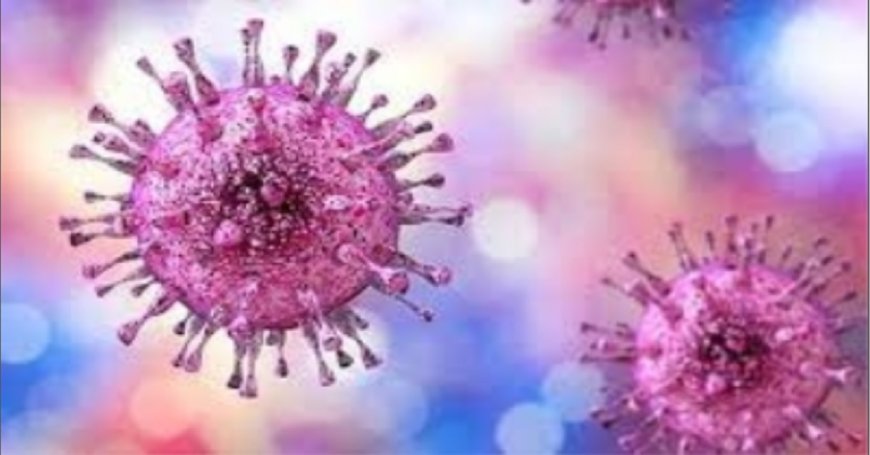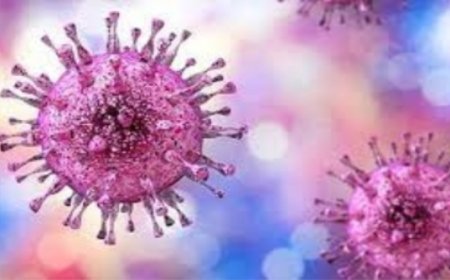Human Metapneumovirus (HMPV): Symptoms, Treatment, Transmission, and Prevention
Learn about Human Metapneumovirus (HMPV), its symptoms, transmission, and available treatment options. Find out how to prevent hMPV infection and protect yourself in the upcoming season.

Human Metapneumovirus (HMPV): Symptoms, Treatment, Transmission, and Prevention
Introduction
In recent years, Human Metapneumovirus (HMPV), also known as hMPV, has become a significant cause of respiratory illnesses worldwide. This virus can lead to mild to severe symptoms, especially in vulnerable populations like young children, the elderly, and individuals with compromised immune systems. While hMPV is often mistaken for other respiratory viruses, it requires specific attention, especially during peak seasons like winter and spring.
This article will delve deeply into Human Metapneumovirus, exploring its symptoms, transmission, treatment options, and prevention strategies. Whether you're looking to understand the virus better or seeking guidance on how to protect yourself and others, this comprehensive guide provides all the essential information.
What is Human Metapneumovirus (HMPV)?
Human Metapneumovirus (HMPV) is a paramyxovirus, belonging to the same family as the respiratory syncytial virus (RSV). It primarily infects the respiratory system, leading to conditions such as the common cold, bronchitis, bronchiolitis, and pneumonia. The virus was first identified in 2001, and since then, it has been recognized as a leading cause of respiratory infections worldwide, especially in children under 5 and older adults.
Though hMPV shares similar symptoms to other respiratory infections, such as the flu or RSV, it is distinct in terms of its genetic structure and how it interacts with the body. Infections can range from mild to severe, with some cases requiring hospitalization.
Symptoms of Human Metapneumovirus (HMPV)
HMPV infection typically begins with symptoms resembling those of a common cold. These symptoms can vary depending on the individual and the severity of the infection. Common symptoms include:
- Cough (which may be persistent or severe)
- Fever (low-grade or high)
- Sore throat
- Runny or stuffy nose
- Wheezing or shortness of breath
- Fatigue and weakness
- Muscle aches
In more severe cases, particularly in infants, the elderly, and those with weakened immune systems, hMPV can lead to conditions such as:
- Bronchiolitis: Inflammation of the small airways in the lungs, causing difficulty in breathing, wheezing, and coughing.
- Pneumonia: Inflammation of the lungs, which can lead to difficulty breathing, chest pain, and fever.
- Respiratory failure: This can occur in severe cases, requiring intensive care or mechanical ventilation.
Unlike some respiratory infections, hMPV can cause prolonged symptoms, with recovery taking up to two weeks, depending on the severity of the infection and the individual’s immune response.
How Does Human Metapneumovirus Spread?
HMPV spreads primarily through respiratory droplets that are expelled when an infected person coughs, sneezes, or even talks. It can also be transmitted through contact with contaminated surfaces. Here's how the virus spreads:
- Direct contact: When an infected person touches surfaces or objects, such as doorknobs, tables, and keyboards, and others come in contact with those surfaces.
- Close proximity: HMPV is highly contagious, especially in close-contact environments such as schools, daycare centers, hospitals, and nursing homes.
- Aerosol transmission: In rare cases, hMPV may spread through the air when a person coughs or sneezes, and others inhale the droplets.
The virus tends to spread more during the cold months, typically between late fall and early spring, though outbreaks can occur throughout the year. The risk of transmission is heightened in crowded areas or among individuals who are immunocompromised or elderly.
Who is at Risk for Severe HMPV Infection?
While anyone can get infected with hMPV, certain groups are at higher risk for severe illness or complications:
- Infants and young children: Especially those under 2 years old, as their immune systems and airways are still developing.
- Older adults: Those over 65 years old, particularly those with chronic health conditions, have weakened immune systems and are more prone to respiratory complications.
- Immunocompromised individuals: People undergoing chemotherapy, organ transplant recipients, or those with chronic diseases like HIV/AIDS are at a higher risk.
- People with pre-existing respiratory conditions: Individuals with asthma, chronic obstructive pulmonary disease (COPD), or other lung diseases are more susceptible to the severe effects of hMPV.
Diagnosing Human Metapneumovirus (HMPV)
Since HMPV symptoms are similar to other respiratory viral infections like the flu, RSV, and the common cold, diagnosis is typically made through laboratory tests. The most common methods for diagnosing hMPV include:
- Polymerase Chain Reaction (PCR) Test: This test detects viral genetic material in nasal or throat swabs and is considered the gold standard for diagnosing hMPV.
- Rapid Antigen Test: Less commonly used, this test detects the presence of viral proteins in a sample, but it is less accurate than PCR.
- Serological tests: These tests measure antibodies in the blood, though they are not used routinely for diagnosing acute infections.
It is essential to visit a healthcare provider if you experience severe symptoms like difficulty breathing, persistent fever, or wheezing, as early intervention can help prevent complications.
Treatment Options for HMPV Infection
Currently, there are no specific antiviral treatments available for hMPV. Treatment is generally focused on symptom management and supporting the body’s immune response. Here’s what can be done:
- Rest and hydration: Staying hydrated and resting is crucial for recovery. Drinking fluids like water, tea, and soups can help keep your body hydrated and ease throat irritation.
- Over-the-counter (OTC) medications: Medications like acetaminophen (Tylenol) or ibuprofen (Advil) can help reduce fever and alleviate pain.
- Humidifiers: Using a humidifier can help ease breathing by adding moisture to dry air and soothing irritated airways.
- Oxygen therapy: In severe cases, particularly for people with difficulty breathing, oxygen therapy may be required to maintain adequate oxygen levels.
- Hospitalization: For high-risk individuals, hospitalization may be necessary to monitor the progression of the infection and provide specialized care, such as intravenous fluids or mechanical ventilation.
Most people recover from hMPV infection within 1-2 weeks. However, those with underlying health conditions or severe symptoms may require more intensive care.
Preventing HMPV Infection
Prevention is key when it comes to hMPV, especially in high-risk individuals. Here are some of the most effective ways to reduce the risk of contracting or spreading hMPV:
- Wash hands regularly: Wash hands with soap and water for at least 20 seconds, especially after coughing, sneezing, or touching potentially contaminated surfaces.
- Avoid close contact with sick individuals: Stay away from people who are showing symptoms of respiratory illness, especially if you are in a high-risk group.
- Cover coughs and sneezes: Use a tissue or the inside of your elbow to cover your mouth and nose when coughing or sneezing to prevent the spread of hMPV.
- Disinfect frequently touched surfaces: Regularly clean and disinfect surfaces like door handles, cell phones, and keyboards, which can harbor the virus.
- Stay home if you're sick: If you have symptoms of a respiratory infection, stay home to prevent spreading the virus to others, particularly in workplaces, schools, and daycare centers.
- Get vaccinated: While there is currently no vaccine for hMPV, stay up to date on other vaccines like the flu vaccine and RSV prevention methods, which may help reduce the severity of symptoms.
HMPV in the United States: Current Trends and Impact
In the United States, hMPV infections are on the rise, with seasonal outbreaks generally occurring in the winter and spring months. Healthcare providers have noted an increase in cases, particularly among children and older adults. Despite the increase in cases, hMPV remains under-recognized, and many individuals may not realize they are infected with the virus.
As health authorities and medical professionals become more aware of hMPV, greater efforts are being made to diagnose and treat the virus promptly. Understanding the impact of hMPV on public health is crucial for improving infection prevention strategies and ensuring vulnerable populations are protected.
Conclusion
Human Metapneumovirus (HMPV) is an important respiratory virus that can cause serious illness, especially in high-risk groups like infants, older adults, and immunocompromised individuals. While there is no specific antiviral treatment, supportive care can help manage symptoms and prevent complications. Prevention through good hygiene practices and avoiding close contact with sick individuals remains the best way to protect yourself from hMPV.
By understanding the symptoms, transmission, and treatment of hMPV, individuals can better protect themselves and their families during peak seasons. Early diagnosis and prompt treatment can reduce the risk of severe illness, and with increased awareness, we can reduce the impact of Human Metapneumovirus on our communities.
What's Your Reaction?





















































